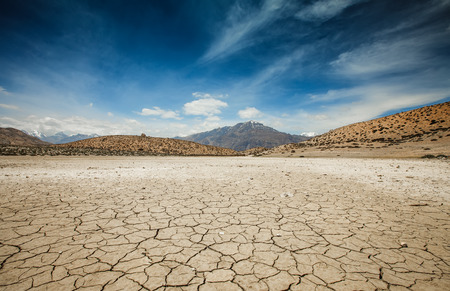A large portion of Earth will be covered in desert wastelands if the world does not meet the goals of the Paris climate deal, according to a research group with a history of making dubious claims.
More than 25 percent of the world’s population will be living in a ![]() drought and growing desertification if global temperatures increase 2 degrees Celsius by 2050, reads a report published Monday in the journal Nature Climate Change.
drought and growing desertification if global temperatures increase 2 degrees Celsius by 2050, reads a report published Monday in the journal Nature Climate Change.
“Our research predicts that aridification would emerge over about 20-30 percent of the world’s land surface by the time the global mean temperature change reaches 2ºC,” Manoj Joshi, a lead researcher from University of East Anglia in the United Kingdom, said in a statement announcing the findings.
Recent research has repudiated similar claims. A report published by the Massachusetts Institute of Technology (MIT) in 2016, for instance, suggests that more carbon dioxide, not less, increases plant growth, limiting the impact temperatures have on climate change.
Previous studies estimate global warming has caused roughly half of Earth’s landmass to demonstrate “significant greening,” and that only 4 percent of the world saw a decrease in plant life. The increased vegetation presumably permitted by warmer temperatures is slowing global warming as well since more trees and plants sequester CO2.
Other claims from scientists at the University of East Anglia have not come to fruition. One researcher predicted in 2000 that kids would grow up without snow; however, it’s been nearly 18 years since U.K. climate scientists at the university argued that global warming would make snowfall a “a very rare and exciting event.”
“Children just aren’t going to know what snow is,” Dr. David Viner, a scientist with the climatic research unit at the University of East Anglia, told the UK Independent in 2000. UK Independent eventually took down the post after the comment gained notoriety within conservative media.
A wave of snowstorms and frigid temperatures pounded parts of the Northeast and the Midwest during the late part of December. Pennsylvania counties, for instance, were clobbered with 60 inches of snow in two days following Christmas Day – the storm shattered records and required the National Guard to help keep the roads clear and residents safe.
The Paris climate agreement calls for countries to reduce greenhouse gases from fossil fuel use to keep from reaching 2 degrees Celsius. Most climate scientists blame greenhouse gases from the burning of fossil fuels for causing manmade climate change.
But there is still disagreement over whether the deal’s goals are even feasible. Costs associated with meeting the goal could skyrocket.
A recent report from Bloomberg New Energy Finance (BNEF) projected that keeping global warming below 2 degrees Celsius by the end of the century could cost more than $12.7 trillion. BNEF also projects $7.4 trillion will be invested in new green energy capacity by 2040, and that global carbon dioxide emissions will be 4 percent lower in that year than in 2016.
This article originally appeared in The Daily Caller.`
